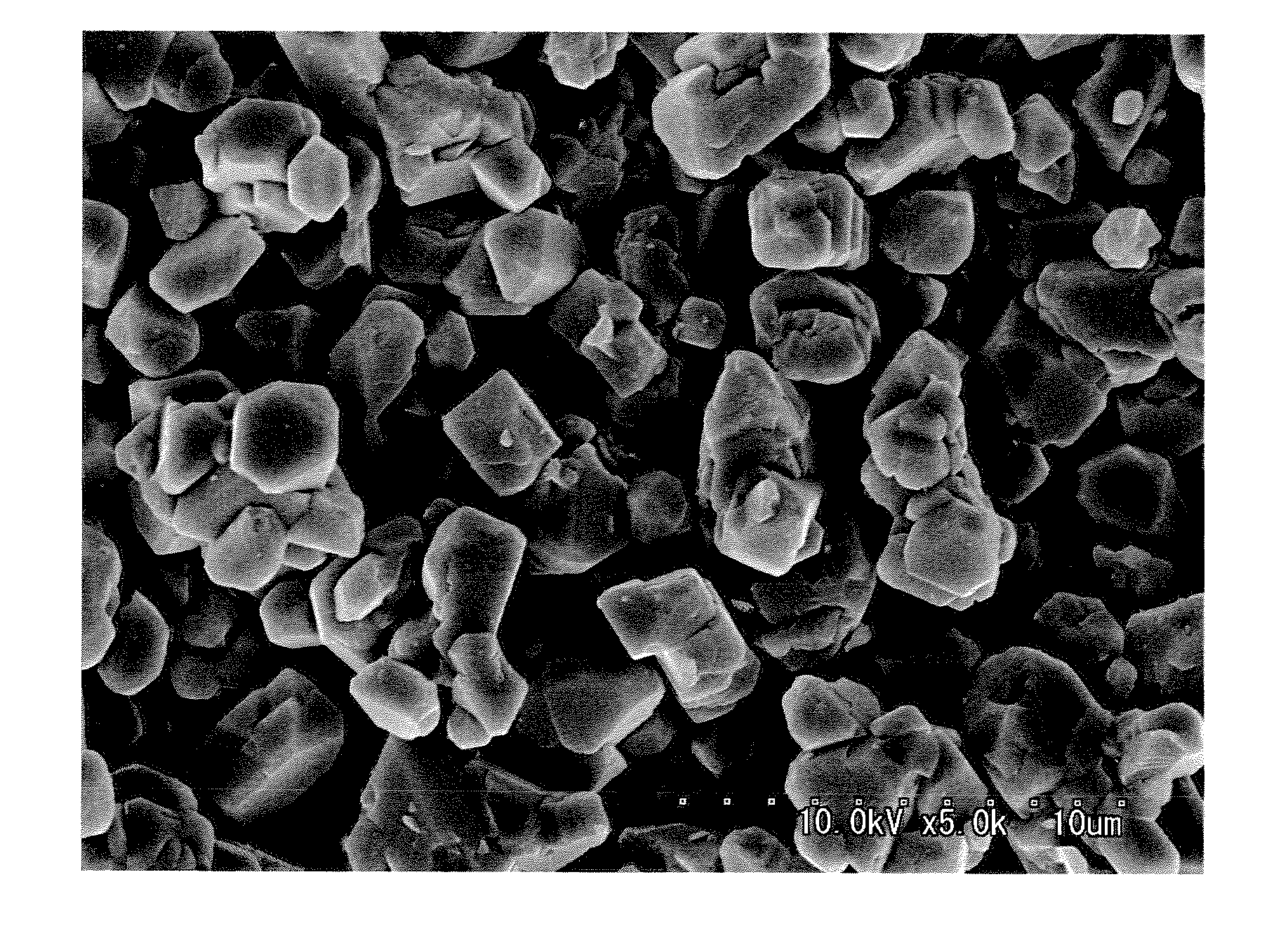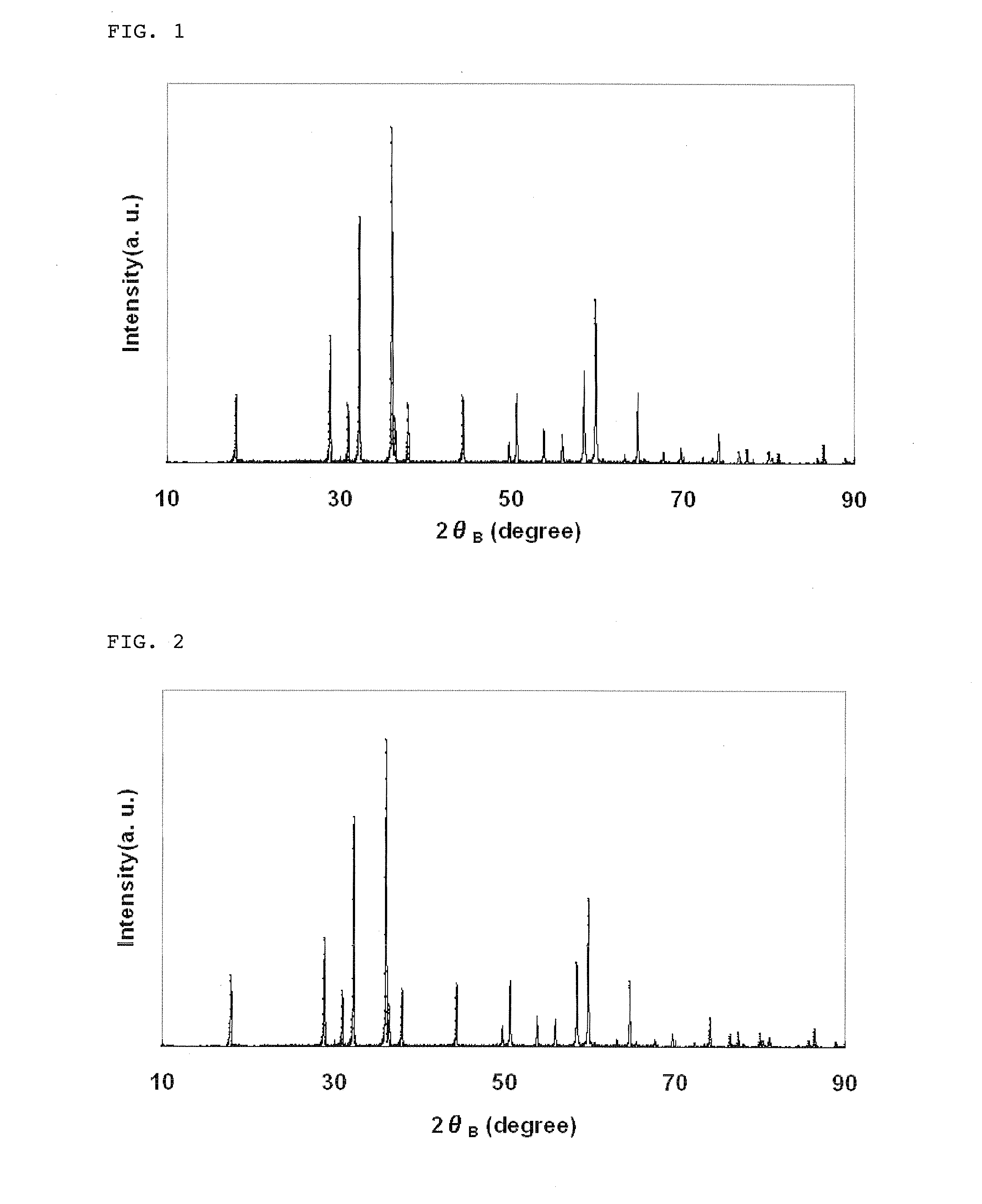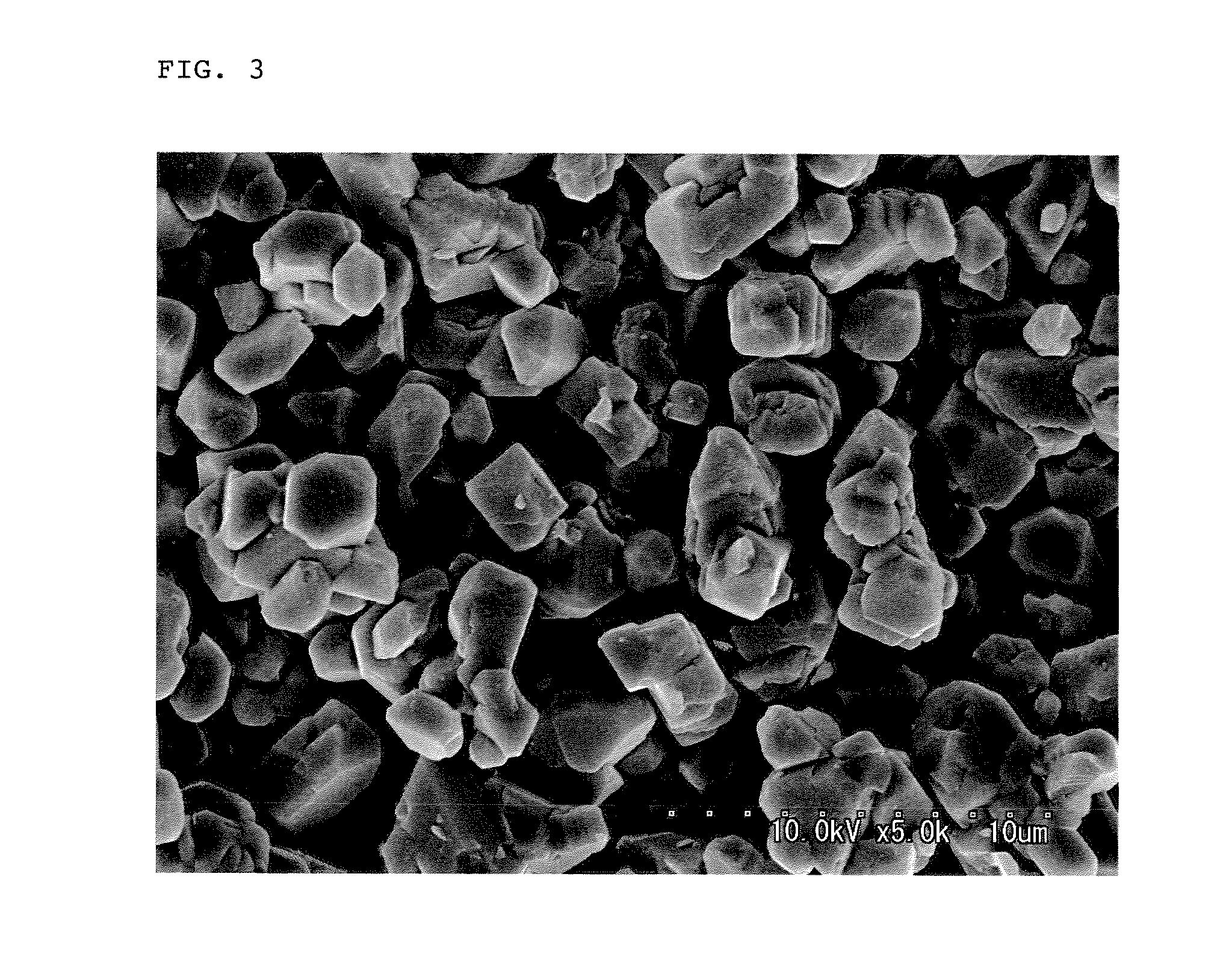Lithium manganate for non-aqueous electrolyte secondary battery, process for producing the same, and non-aqueous electrolyte secondary battery
a technology of lithium manganate and secondary battery, which is applied in the field of lithium manganate, can solve the problems of poor environmental safety upon disposal of the battery obtained, high production cost, and high production cost, and achieve excellent high-temperature stability, prevent elution of mn, and high output power
- Summary
- Abstract
- Description
- Claims
- Application Information
AI Technical Summary
Benefits of technology
Problems solved by technology
Method used
Image
Examples
example 1
Production of Lithium Manganate Particles
[0096]Under a nitrogen gas flow, 0.5 mol of manganese sulfate was added to 3.5 mol of sodium hydroxide to prepare a reaction solution having a total volume of 1 L. Manganese hydroxide thus produced was aged at 90° C. for 1 hr. After completion of the aging, air was passed through the reaction solution to oxidize manganese hydroxide at 90° C., and the obtained reaction product was washed with water and then dried, thereby obtaining manganese oxide particles.
[0097]The thus obtained manganese oxide particles were Mn3O4 and had a granular shape, an average particle diameter of 4.8 μm and a BET specific surface area of 0.6 m2 / g.
[0098]The resulting water suspension comprising the manganese oxide particles was washed with water in an amount of 5 times the amount of the water suspension using a filter press, and further subjected to deaggregation to adjust a concentration of the manganese oxide particles in the suspension to 10% by weight. A 0.2 mol / ...
examples 2 to 5
[0106]The same procedure as defined in Example 1 was conducted except that the kind of manganese oxide used, the kind of Y1, the amount of Y2 and the calcination conditions were changed variously, thereby obtaining lithium manganate particles.
[0107]The production conditions used above are shown in Table 1, and various properties of the thus obtained lithium manganate particles are shown in Table 2.
PUM
| Property | Measurement | Unit |
|---|---|---|
| primary particle diameter | aaaaa | aaaaa |
| specific surface area | aaaaa | aaaaa |
| particle diameter | aaaaa | aaaaa |
Abstract
Description
Claims
Application Information
 Login to View More
Login to View More - R&D
- Intellectual Property
- Life Sciences
- Materials
- Tech Scout
- Unparalleled Data Quality
- Higher Quality Content
- 60% Fewer Hallucinations
Browse by: Latest US Patents, China's latest patents, Technical Efficacy Thesaurus, Application Domain, Technology Topic, Popular Technical Reports.
© 2025 PatSnap. All rights reserved.Legal|Privacy policy|Modern Slavery Act Transparency Statement|Sitemap|About US| Contact US: help@patsnap.com



